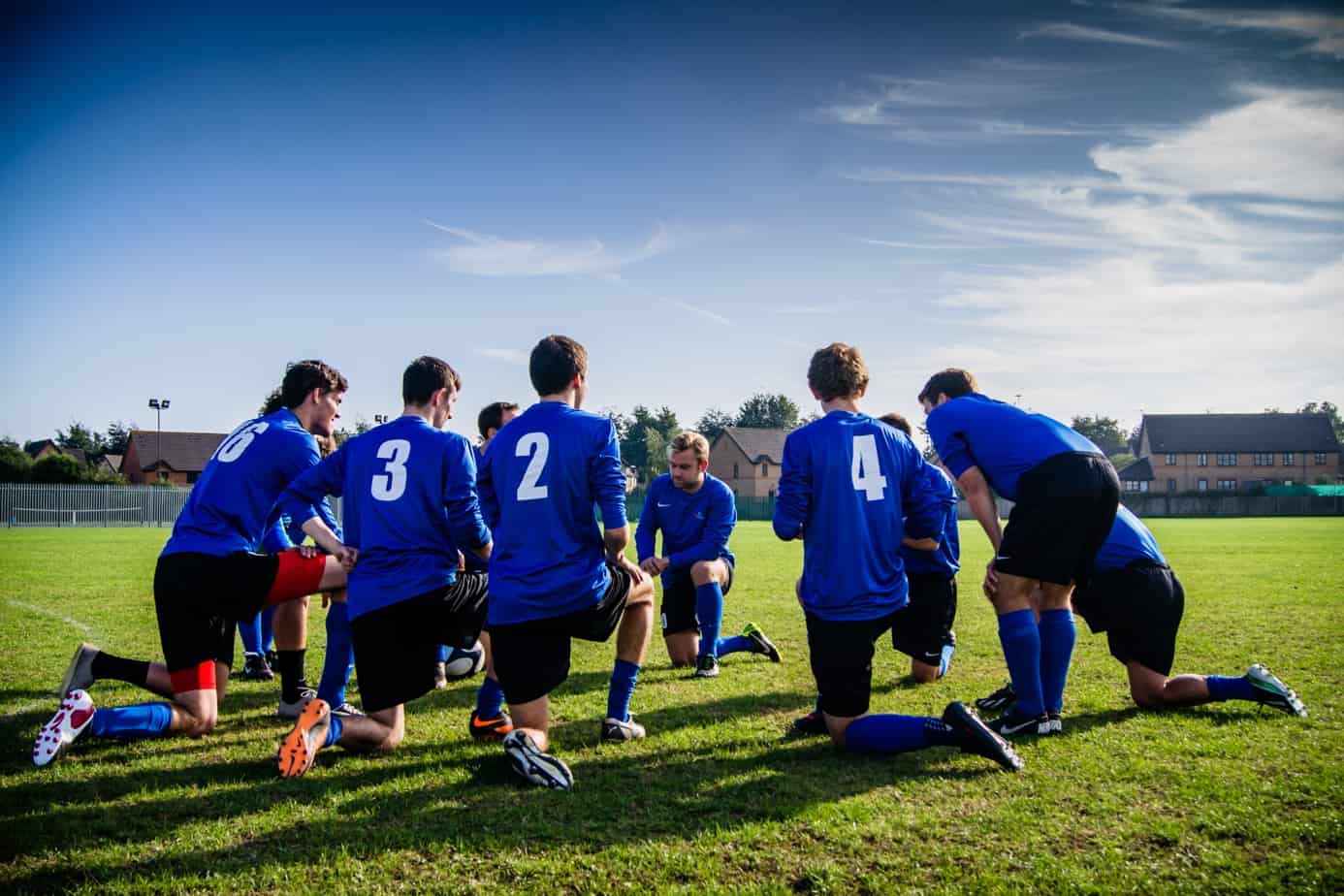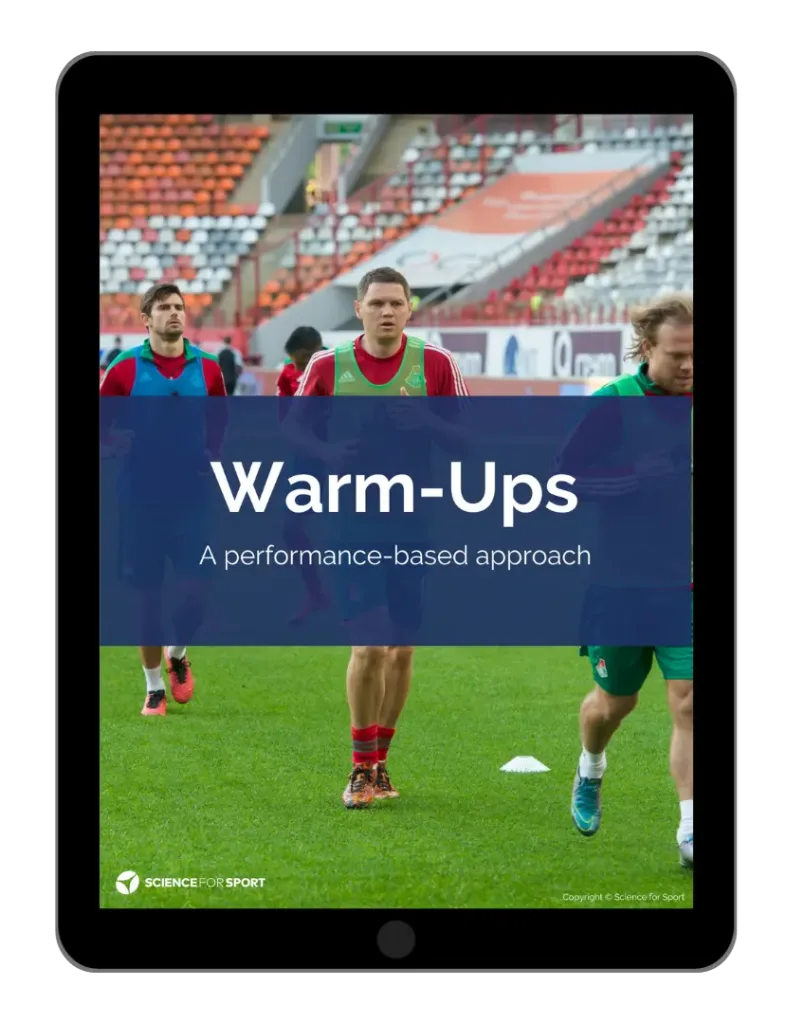Rethink your warm-up: Make the most of pre-game and half-time warm-up strategies
A Performance Digest Snippet
- The Objective
- What the researchers did
- What the researchers found
- Practical Takeaways
- Author’s comments
- References
- About the author
- Comments
Objective
A warm-up routine has been suggested to be critical in increasing preparedness for subsequent effort and thus maximising performance. An active warm-up consists of using physical activity, while a passive warm-up depends on the use of external means.
However, the effectiveness of the warm-up routine appears to be dependent on many factors: such as the type of sport, athlete fitness and experience, tasks to be performed, environmental conditions, and constraints imposed by event organisers.
The aim of this systematic review was to analyse research findings on the effects of warm-up, post-warm-up (time between the end of a warm-up and the start of the match), and re-warm-up (half-time break) strategies on explosive efforts in team-sports

What the researchers did
Of 330 studies, 30 articles were included. 19 used a warm-up strategy, 5 used a post-warm-up strategy and 6 used a re-warm-up strategy. Any peer-reviewed publications that had a warm-up intervention in team sports were included.
What the researchers found
A wide range of warm-up routines showed improvements in performance with a large effect size. For example, 8 x 50 metre (m) sprints, a 5-minute jog with a five-repetition maximum (5RM) leg press, or completing back squats at the end of a typical warm-up improves explosive performance. This shows that a short, specific warm-up is as effective as a long, specific warm-up for sprint performance.
In addition, 7 minutes of dynamic exercises after 5 minutes of jogging was associated with a general improvement in explosive tasks such as sprinting, jumping, and agility performance. Small-sided games and whole-body vibration may also improve explosive task performance. Static stretching was the least effective at improving sprint performance and agility.
[optin-monster-shortcode id=”jyyw4xzrpuivfz8gggx4″]
What the researchers found
For post-warm-up strategies, a progressive decrease in performance was observed in resting situations with a 4 – 6 % decrease in sprint performance and 12 – 20 % decrease in jump performance. The use of a heated garment had a moderate effect on sprint performance, but when combined with 3 x 5 jumps with 20 % bodyweight, a large effect was observed on sprint performance.
No strategy was found to be effective in improving jump performance. Similarly, a decrease in performance was identified when passive rest was implemented during the re-warm-up. Heat garments had the best effect size compared with resting in sprint and jump performance. Eccentric exercises were the only intervention found to be detrimental to sprint and jump performance.
Practical takeaways
Of the 19 warm-up articles, 69 % showed an improvement in sprint performance, 87.5 % showed an improvement in jump performance, and 83 % showed an improvement in agility performance. This suggests that a properly structured warm-up strategy can increase athlete performance in many different sports.
However, comparing results between studies is difficult due to different control groups and different warm-up protocols. Therefore, to define a properly structured warm-up strategy, it is important to know which variables are critical for optimising subsequent explosive performance.
Research tends to recommend a short, active warm-up that progresses in intensity until maximal effort close to the end of the warm-up. Shortly afterwards, passive strategies should be implemented before the game and the re-warm-up should include short sprints and jumps before entering the game.
Author’s comments
“Team-sport warm-ups generally last anywhere from 20 – 40 minutes and this sometimes doesn’t include the athletes individual preparation prior to the team warm-up. Based on this review, it may be more beneficial to shorten the team warm-up to potentially decrease subsequent fatigue and receive the same benefits. However, in sports such as rugby where coaches want to cover unit specific skills (e.g. attack and defence), as well as a short dynamic warm-up, it can be very difficult to fit this into such a short time frame of 20 minutes.
Additionally, certain players like to be out earlier to do their own individual pre-warm-up or work on specific skill sets such as kicking. This study may be a case of what is good in the literature may not be good in a practical setting. However, that does not mean certain points cannot be adapted to the real world (e.g. gradually increasing intensity of the warm-up).
[optin-monster-shortcode id=”nhpxak0baeqvjdeila6a”]
Potentially a warm-up could start with low- intensity skills to get the heart rate up. Following this, some more specific unit or team skills could be incorporated that are a little more intense. Following this some kind of offense or defence drill that gets heart rate (HR) closer to 90 %. To finish, 1 -2 sprints can be done for some high-intensity speed and potentiation.
Post-warm-up and re-warm-up strategies presented in this study should be implemented with all team-sports. However, the time available along with environmental conditions must be taken into consideration. You don’t want to put heat garments on players in 30+ degree Celsius temperatures. Rather, active strategies are better used in this situation.”
This Performance Digest snippet was taken from issue #23, Sept 2018 available for members. If you aren’t a member yet, fill out the form below to find out how The Performance Digest can transform your coaching now!
References
- Effects of Warm-Up, Post-Warm-Up, and Re-Warm-Up Strategies on Explosive Efforts in Team Sports: A Systematic Review. Silva Et al., (2018) https://link.springer.com/article/10.1007%2Fs40279-018-0958-5



